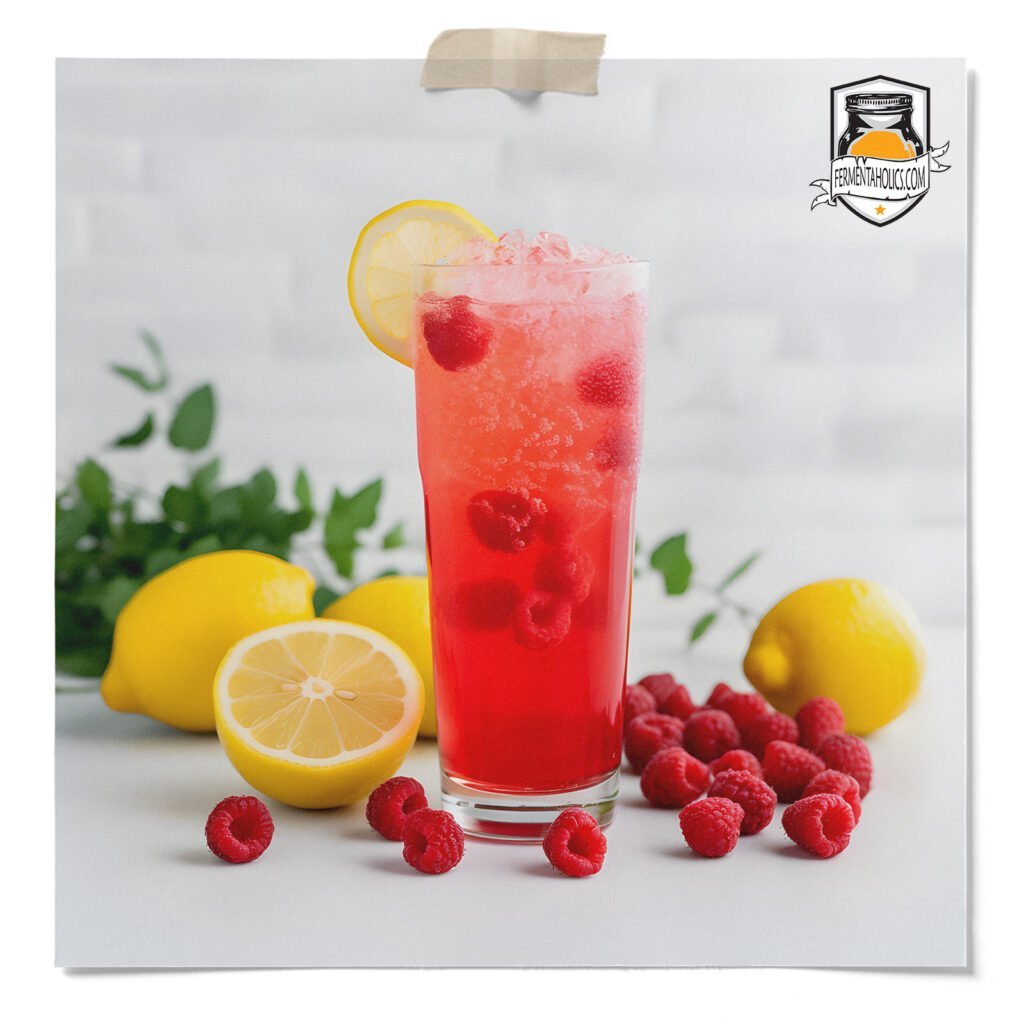
Have you ever stopped and wondered what actually makes pink lemonade pink? The pink likely came from a red fruit. Today, we’ll be using raspberries but feel free to change it up with your favorite. Strawberries or cherries are great substitutes. In this recipe, the kombucha’s tartness mixed with the citrus lemony flavors balances the raspberries’ sweetness perfectly.

It’s important to note that making homemade kombucha is almost always a two-step fermentation process. Brewing kombucha is only a one-step process for those who prefer an unflavored flat kombucha. Otherwise, the steps consist of a primary fermentation and secondary fermentation.
Since this recipe is for the secondary fermentation, to make this recipe, you’ll need to have kombucha that has finished the primary fermentation and is ready to bottle.
Fresh Lemons- You’ll want about 2 tbsp freshly squeezed lemon juice per 16 fl oz bottle of kombucha, which is about 1/2 a lemon.
Honey – This is optional but really brings it to the next level. The honey helps add flavor but also helps build up carbonation for extra bubbly booch. Most of the sugar will get consumed by the yeast during the secondary fermentation.
This recipe makes one 16-fluid-ounce bottle. A 1-gallon batch of kombucha will make seven 16-ounce bottles, so for one gallon, you will need to multiply the ingredients by 7. Before beginning this recipe, you will need to:
20
minutes2-10 Days
This raspberry lemonade kombucha recipe is for one 16 fluid ounce bottle. For a gallon batch, make seven bottles. To scale this recipe to a gallon batch, multiply the ingredients by seven or toggle the serving size up to seven above. Before bottling your kombucha, remove the SCOBY pellicle along with 12-16 ounces of kombucha starter tea from your brew, and reserve for your next batch.
16 Oz Kombucha from a completed primary fermentation.
1/4 Cup Fresh or Frozen Raspberries (thaw frozen before use)
2 TBSP Fresh Squeeze Lemon Juice
1 TSP Honey (can substitute cane sugar or maple syrup)
Mint (optional)
1 16 Oz Flip top bottle(s)
Strainer
Blender
Place raspberries, honey, and lemon juice in the blender and puree until smooth. If needed, add some kombucha to help the blender along.
Using a funnel, pour the raspberry puree into an empty bottle.
Fill each bottle with kombucha, leaving about 1 to 2 inches of head-space. Tightly place the caps on each bottle.
Keep bottles at room temperature for 2-10 days; it will carbonate faster at higher temperatures and slower when cold.
Burp the bottles as necessary to release excess pressure. This is done by removing the cap to allow built-up pressure to escape then placing the cap back on.
Chill in the refrigerator once you’re happy with the carbonation levels. Based on preference, you can serve as is or strain before drinking.


Looks like you haven't made a choice yet.